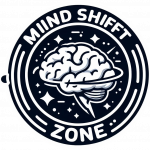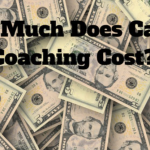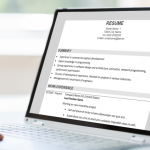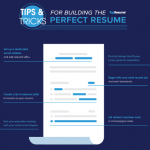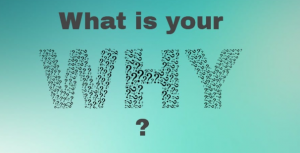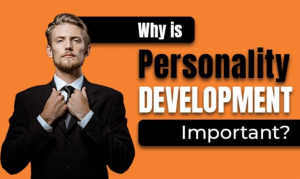Imagine you meet someone for the first time and they instantly seem charming, well-spoken and confident. While you don’t know anything about them, it is possible that you could not be aware that they have other qualities that are admirable like their intelligence or their kindness. This incredibly psychological phenomenon is called the Halo Effect. It’s a bias in our thinking that plays an important influence on our perceptions of individuals and can lead us to make judgments from a lack of data. We’ll dig into what the Halo Effect is, explore its causes, and look into how it affects our perceptions, specifically in the formation of first impressions.
What is the Halo Effect?
The Halo Effect is a mental shortcut that lets us make quick judgements about individuals based on one distinctive feature. The Halo Effect isn’t an unimportant thought. It will profoundly affect our interactions with others and can even affect our decisions regarding hiring and relationships as well as education.
Halo Effect Definition and Origin
The Halo Effect psychology is defined as a person’s perception of an individual affects how we feel and perceive their character. For instance, if we consider someone attractive physically, we may also think they are more skilled or trustworthy, despite the lack of evidence to prove these beliefs. The idea of “the Halo Effect” was first introduced by psychologist Edward Thorndike in 1920. Thorndike’s research revealed that people tend to let some positive characteristics like attractiveness take precedence over other qualities and ‘halo’ the person in terms of qualities that they may not necessarily have, according to the source Verywell Mind.
Thorndike’s early research focused on military officers assessing their subordinates. He found that one positive characteristic frequently led to the assumption that there were other positive qualities and resulted in skewed assessments. This kind of bias has been observed in a variety of settings including education and teaching, where teachers’ impressions of students may be affected by their behaviour or appearance and ultimately affect academic assessment.
How the Halo Effect Influences Perception

The Halo Effect is not limited to social interactions. Iit also affects the way we view brands, products and even our own choices. For example the design of a product can convince consumers that it’s more efficient or trustworthy irrespective of the actual performance. This is a sign that this Halo Effect can skew our judgement and lead us to make choices based on insufficient data.
Cognitive Bias and First Impressions
Based on Psychology Today, the Halo Effect is particularly potent in the context of first impressions. When we meet someone for the first time our brains have the ability to make an instant judgment, usually within a matter of seconds. The speed of judgment is influenced by things like appearance, body language, and tone of voice. When the initial impression has been formed, it will significantly affect how we view this person later on. For instance, if a person seems confident and articulate during the first meeting, we might not be aware of other positive qualities, for instance integrity or competence even though these qualities cannot be proven objectively.
Incredibly, the Halo Effect meaning can also work in reverse, it known as “the Horn Effect,” where one negative aspect can cloud our judgement and make us perceive the person more negatively in all fields. The dual nature of Halo and Horn Effects underscores the importance of recognizing our cognitive biases, and working to make more rational and informed judgements.
Real-Life Examples of the Halo Effect
What is Halo Effect? It isn’t just a theory; it’s actually an actual phenomenon that is played out in a variety of real-world situations and often has significant implications. From the boardroom to the classroom and even in our daily buying habits, this mental bias impacts how we think about as well as interact with our surroundings. Let’s take a look at some concrete the Halo Effect examples in action.
In Education
Take a look at a classroom where the student is punctual, courteous and clean. Teachers, whether consciously or not they may assume that the student is more smart, efficient or skilled than other students. This belief can affect the way a student is evaluated as well as the focus they receive, and the opportunities they are offered. Define halo effect: it’s when these initial positive qualities create a “halo” which can influence the teacher’s overall assessment. APA PsycNet mentions that research has shown that students viewed positively by teachers will tend to be given higher grades regardless of their actual performance.
The effect may also be felt in the reverse direction, when a student who gives an impression that is not good could be judged harsher in future tests regardless of their actual abilities. This is a significant issue in education: the necessity for teachers to guard against cognitive biases which could unfairly disadvantage or degrade students based on impressions, rather than merit.
In the Workplace
In the world of work, there is a phenomenon known as the Halo Effect which can have a significant influence on promotions, hiring and performance evaluations. For instance, if an employee is recognized for their exceptional communication abilities, they could be perceived to be superior in other aspects, like management or strategic thinking. This could lead to promotions or even responsibilities that the worker may not be able to fulfill just because of the positive image created by a particular characteristic.
In contrast the employee who gives an impression that is not positive or appears disorganized or anxious during a first meeting may be unable to overcome that negative impression even when performing admirably. This can cause bias in the performance evaluations and result in decisions that might not accurately represent the actual skills or contribution to the organization.
In Marketing and Branding
The Halo Effect is a powerful instrument in the field of advertising and marketing. Many companies use it to establish a positive connection between their brand and specific desirable qualities. For example, if a high-end car manufacturer is renowned for its elegant style and top-quality performance, people may consider that other products, including accessories or even items that aren’t related, such as watches, are of higher quality, even if they’ve never tried the products. This creates a halo of the brand’s good reputation throughout the entire product range.
Additionally endorsements from celebrities are a popular tactic that makes use of to capitalize on the Halo Effect example. When a popular or well-known public celebrity endorses a brand in a way, customers can be able to transfer their feelings of gratitude about the person’s popularity onto the product, increasing business and spreading brand recognition. This method works since it is believed that the Halo Effect leads consumers to believe that if a product is worthy of the most famous person then it must also be great for everyone else.
Negative Consequences of the Halo Effect
Although Halo Effects can be beneficial, and can sometimes lead to positive outcomes, it has its dark side, especially in the area of decision-making. The inherent bias it creates can cloud judgement, leading to uninformed or incorrect choices with significant negative consequences.
Bias in Decision-Making
When it comes to decision making processes, there is possibility that the Halo Effect can result in groups or individuals making decisions in the absence of accurate or biased information. For instance, when making hiring decisions, employers could be drawn to the charismatic personality of a candidate or their prestigious school and allow these qualities to outweigh other factors for instance, relevant skills or experiences. This could lead to the choice of candidates that might not be the ideal candidate for the job and ultimately impacting the company’s performance and its culture.

In legal situations, proceedings or settings, the Halo Effect can also manifest in cases where jurors are influenced by the appearance or manner of a defendant and can lead to biased judgements. A well-dressed, articulate and confident defendant could be perceived as more reliable and less likely to be guilty of committing an offense, regardless of the evidence provided. This could compromise the impartiality in legal processes, in which integrity is the most important thing.
How to Mitigate the Halo Effect
Understanding this Halo Effect is the first step towards reducing its impact. Once you are cognizant of its influence, people and companies can take action to ensure that their decisions are in a thorough and objective evaluation of all relevant variables.
Strategies for Individuals
To combat this Halo Effect involves practicing self-awareness and critical thinking. A good strategy is to focus on obtaining a variety of information prior to forming an opinion or taking an informed decision. This could mean pursuing various perspectives, asking a variety of questions, and looking at both the positive and negative aspects of an individual or a situation. Furthermore, taking the time to consider your the initial impressions and confront them with evidence could make sure that decisions are sane and based on solid evidence.
Another method is to break up complex decisions into smaller, easier to manage parts. By looking at each element independently, individuals can minimize the chance of one feature or character that could influence the whole decision-making process. This approach is especially useful in high-risk situations, where the objectiveness of the decision is paramount.
Strategies for Organizations
Companies can employ a variety of strategies to counteract their risk of suffering from the Halo Effect, particularly in areas like hiring or performance appraisals, as well as customer relations. One method that works is to standardize procedures through an application of structured and objective evaluation criteria. By establishing clear, uniform guidelines for evaluating candidates and employees, companies can lessen the influence of biases based on perceptions and ensure that the decisions are based on pertinent capabilities and performance rather than superficial characteristics.
Training programs also be instrumental in increasing awareness regarding how to recognize the Halo Effect and other cognitive biases that affect decision-makers and managers. According to Forbes reports, these training programs can help participants learn to spot and overcome the biases that can lead to more equitable and fair procedures within the company. Furthermore, companies can establish feedback mechanisms that permit the evaluation and correcting decisions that might be in the direction of Halo Effect. This Effect ensures ongoing improvement and accountability.
Conclusion
The Halo Effect is a powerful cognitive bias that impacts the way we think about and assess other people, sometimes without even realizing it. While it may lead to positive outcomes in certain situations, however, it can also have the potential to have significant negative effects, especially in the context of decision-making. When we are aware of and accepting that there is a Halo Effect, individuals and companies can take action to minimize its impact and result in more objective and fair evaluations. Through personal reflection or through the use of structured procedures, it is important for us to make sure that our judgements are based on a thorough understanding of the facts rather than being heavily affected by one particular characteristic or trait. Understanding that the Halo Effect is not just about avoiding bias. It’s about making more informed, better choices that benefit all affected.
